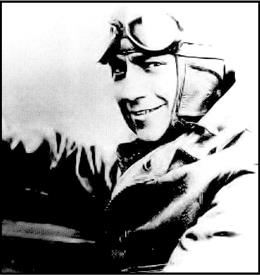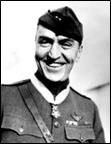tween 750-800 enemy aeroplanes and 70 Observation Balloons. American losses were between 280-350 aircraft and 40 Observation Balloons. (apparently getting accurate air combat figures in WW I was still in its infancy) Still that’s not too shabby considering the Americans were only involved for a year and a half.
Americans love to keep score, (it’s a good thing to do and helps to keep one awake at a major league baseball game) and during WW I they counted downed aeroplanes. To become an ACE one needed to down five enemy aircraft. There were 120 American Aces. Most Aces downed between five and eight planes. Quite a few managed to reach double figures and two made it into the twenties.

 Following the armistice, studies were performed to adopt the aeroplane to naval reconnaissance use and naval air combat. Even though he was an ardent supporter of land based aircraft, naval combat air found a champion in General Billy Mitchell, a hero of WW I. (It is only a myth that he was named after an airplane.) Because of his untiring efforts, he is considered to be the Father of the United States Air Force (With apologies to Hap Arnold). It was Mitchell that brought naval air power to life. In a test, he proved that naval aerial bombing could sink a battleship. Since aircraft carriers hadn’t been invented, a plane would be catapulted from the bow of a ship and recovered by crane after it landed in the water. This worked well for reconnaissance but little else. So great naval minds set about finding a way to launch more than one plane. The next major improvement in aerial reconnaissance/combat was the development of the aircraft carrier. The first one was the HMS Furious, essentially they flattened the superstructure of a battlecruiser and were able to launch seven Sopwith Camels. They destroyed two Zeppelins at Tander naval base in Germany (Now Tander Denmark). The first US carrier was the USS Langley (CV-1).
Following the armistice, studies were performed to adopt the aeroplane to naval reconnaissance use and naval air combat. Even though he was an ardent supporter of land based aircraft, naval combat air found a champion in General Billy Mitchell, a hero of WW I. (It is only a myth that he was named after an airplane.) Because of his untiring efforts, he is considered to be the Father of the United States Air Force (With apologies to Hap Arnold). It was Mitchell that brought naval air power to life. In a test, he proved that naval aerial bombing could sink a battleship. Since aircraft carriers hadn’t been invented, a plane would be catapulted from the bow of a ship and recovered by crane after it landed in the water. This worked well for reconnaissance but little else. So great naval minds set about finding a way to launch more than one plane. The next major improvement in aerial reconnaissance/combat was the development of the aircraft carrier. The first one was the HMS Furious, essentially they flattened the superstructure of a battlecruiser and were able to launch seven Sopwith Camels. They destroyed two Zeppelins at Tander naval base in Germany (Now Tander Denmark). The first US carrier was the USS Langley (CV-1).
So, thanks to Colonel* Billy Mitchell, we now had air power operating both on land and sea. On the surface it would appear that there was a simple division of responsibility. However, during World War II there were lots of airmen performing a wide range of assignments. You had Army pilots supporting ground troops. There were Navy pilots fighting on the high seas, and Marine pilots flying from land based airfields and
ships supporting invasion forces on the ground. Ground based airplanes both Army and Marine were attacking ships at sea. To add to the perplexity there were Coast Guard pilots flying from ground bases and from the sea on Escort carriers, escorting supply ships in the Atlantic and Mediterranean Seas, all the while fighting German and Italian submarines. There was obvious overlap and duplication of missions. This displayed a need for further realignment of the air services. The first thing the Americans did was to refer to their flying machines as airplanes.
The Army was established as the main ground-force of the United States. Its primary function is to protect and defend the country and its interests with ground troops, armor, artillery, attack helicopters, tactical nuclear weapons, and other assorted weapons.
The primary mission of the Air Force is to defend the U.S. and its interests via air and space. It operates fighter aircraft, tanker aircraft, light and heavy bomber aircraft, transport aircraft, and of course, helicopters. The Air Force is also responsible for all military satellites and controls strategic nuclear ballistic missiles. Both the Army, and the active duty Air Force are supplemented by the Air Force Reserves and the Air National Guard.
The Navy’s primary mission is to maintain and protect U.S. interests at sea, both above and below the surface. In times of conflict, the Navy helps to supplement Air Force air power, since Navy aircraft carriers can often deploy to areas where fixed runways are impossible. Navy ships can attack land targets from miles away with very heavy guns, cruise missiles and helicopters. Navy submarines allow stealth attacks on our enemies from right off their shores. Submarines do not use helicopters.
Which leads us to the Marine Corps. For combat operations, the Marine Corps likes to be self-sufficient, so it also has its own air power, consisting primarily of fighter and fighter/bomber aircraft and surprise helicopters. But the Marines do use the Navy for logistical and administrative support; there are no doctors, nurses, or enlisted medics in the Marine Corps, specially-trained Navy Corpsmen accompany the Marines into combat.
This brings us to the United States Coast Guard. It is the smallest of all the U.S. military branches. It has had a bit of a vagabond history. It was originally established as the Revenue Cutter Service in 1790. In 1915, it was reformed as the U.S. Coast Guard, under the Treasury Department. Then in 2002, the Coast Guard was relocated to the Department of Homeland Security. The Coast Guard consists of ships, boats, aircraft (and helicopters - we can’t seem to get away from those pesky things) and shore stations that conduct a variety of missions around the world. It is also supported by the Coast Guard Reserves, and a volunteer Coast Guard Auxiliary in times of need.
The newest branch of the armed services is the U.S. Space Force. It is an arm of the Air Force and its mission is to “organize, train, and equip space forces in order to protect the U.S. and allied interests in space